Football World Cup: Is it worth the expense of hosting?
- Published
Germany lift the World Cup trophy
There is a double-edged nature to Fifa's preference for hosting World Cups in all four corners of the planet.
On one hand, why not? Western European fans get to see the best players on a weekly basis.
There is, then, an element of fairness in allowing the same privilege to be enjoyed briefly by South Africans, Brazilians, Russians or Qataris.
On the other hand, though, hosting a 32-team tournament is vast, complex - and, especially once Fifa's demands and specifications are taken into account, expensive.
Can countries with urgent social priorities really justify spending so much money on football infrastructure?
Brazil 2014 offers an interesting test case. It was a memorable tournament on the field, and even better off it with fans from all over the globe mingling happily.
There were fewer organisational problems than had been feared, and the movement protesting against the tournament, while always present, did not burn with the same intensity as in its dramatic flare-up a year earlier during the Confederations Cup.
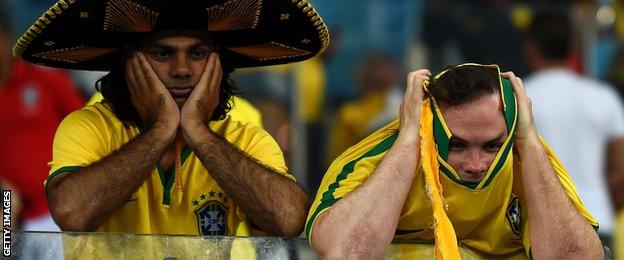
Brazil's confidence took a strong knock after losing 7-1 to Germany in the World Cup semi-final
Even so, it is hard to argue Brazil got a good deal for its money. It had been hoped the main benefit to society would come in the form of transport improvements.
While these might be necessary to unclog Brazil's big cities, they were not strictly necessary for the World Cup. And so, predictably, as soon as Brazil was behind the clock, many urban mobility projects were quietly dropped.
As recently as three months ago only around two thirds of the funds for the remaining transport projects had actually been allocated. Some projects may not be completed until 2016.
But if a World Cup can go ahead without new monorail systems, the same does not apply to stadiums. It was a battle, but all 12 were up and running in time for the circus to come to town.
The cost was considerable - somewhere around $4 billion (£2.57bn) and now the club season in Brazil has come to a close, it would seem an appropriate time to focus on the consequences on the domestic game.
There is some positive news to report. Average crowds in this year's Brazilian first division were up to 16,500, their highest figure since 2009. This was despite, by popular consensus, a championship of very dubious quality, with the lowest goals per game ratio for years.
On the field, Brazilian football is at a very low ebb. Perhaps even more shocking than the national team's 7-1 World Cup semi-final capitulation against Germany is the fact that not a single Brazilian club made it through to the semi-finals of the Copa Libertadores, the continent's Champions League - even though they now have a giant financial advantage over their continental rivals.

Mane Garrincha National Stadium was described as the "best he had ever seen" by Kevin Kilbane
In this scenario the fact crowds have gone up is encouraging, and hints at a potential for further increases.
Amir Somoggi, one of the country's foremost experts on football finance, has been very critical of the excessive costs and missed opportunities of the World Cup, but he is also optimistic the average crowd figure can reach 25,000 in the next three or four years.
The 2014 increase, argues Somoggi, "is a direct consequence of the inauguration of the new stadiums and the motivation of the fan to discover them after the World Cup".
In other words, there has been some return on all that investment, but the amount spent was much higher than it could and should have been.
Fifa had suggested a World Cup with eight host cities but Brazil instead decided to use 12.
Once again, the double edged sword was in evidence. Was this a noble attempt to decentralise the game and bring the tournament to more remote areas? Or an opportunity for enrichment and power-broking at the taxpayers' expense?
Whatever the explanation, it has left a herd of potential white elephants dotted around the plain. The stadium in Brasilia - described by Kevin Kilbane during the World Cup as the best he had ever seen - is the second most expensive in the world and it's in a city that lacks a top-class football team.
The cities of Manaus, on the edge of the Amazon, and Cuiaba, near the open marshes of The Pantanal,, external also have gleaming new stadiums without a big local team to fill them. So what has happened to these grounds after the World Cup?
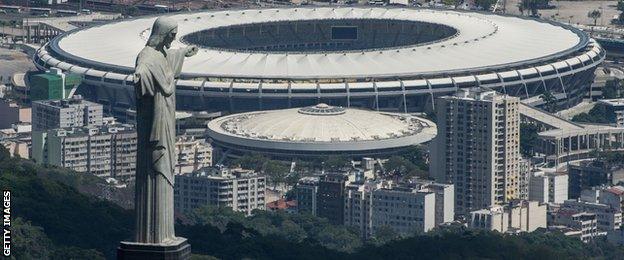
The Maracana in Rio de Janeiro was developed and extended in order to accommodate the crowds for the World Cup and the 2016 Summer Olympics
The answer is they have been pressed into service in the Brazilian first division. Brasilia staged four league games after the World Cup, Cuiaba staged three and Manaus two - and will also play host to a January pre-season tournament.
The local councils there have been paying teams from Rio and Sao Paulo to relocate some of their matches.
This may avoid stadium idleness, but creates its own problems. For one thing, it is an affront to the guiding principle of a league - that all the teams play each other home and away. These matches are effectively being played on neutral ground.
Perhaps more worryingly, the occasional invasion of glamorous outsiders makes it harder for the local teams to build up their own support base, and the only way these stadiums can be viable in the long term is if Brasilia, Manaus and Cuiaba can develop clubs with the popular appeal to draw a crowd.
It is early days, but one area where the World Cup has conspicuously failed so far is in its quest to redraw the map of Brazilian football.
The traditional heartland is the South East (Rio, Sao Paulo and increasingly Belo Horizonte) and the South (Porto Alegre). The teams from the North East have sizeable fan bases, but the region is relatively poor, and at national level they are rarely serious challengers.
Half of the Confederations Cup and a third of the World Cup took place in the North East, giving rise to hopes that, with new stadiums and better infrastructure, the local clubs would finally be able to punch their weight.
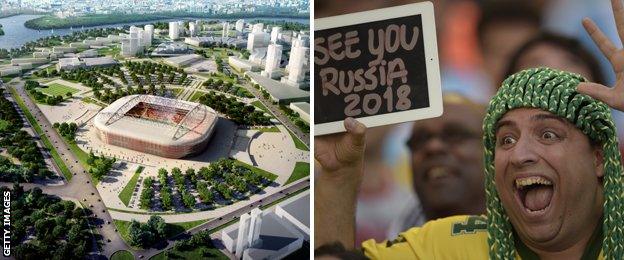
Russia 2018 stadium plans
This has clearly yet to happen. The duo from the North East city of Salvador, Bahia and Vitoria, were both relegated to the second division. It gets worse - further up the coast at Natal, another World Cup venue, America went down to the third.
Sport of Recife will be the North East's only representative in the 2015 first division - a competition where, astonishingly, 18 of the 20 teams will come from the South and South East.
In these traditional centres of the game there is no danger of the new stadiums not being used on a regular basis, but here too there are problems.
The Maracana in Rio and the Mineirao in Belo Horizonte have been handed over to consortiums who will administer them over the next few decades. The logic here is one of profit - which has led to ticket price hikes.
Ticket pricing in Brazil is a complex issue. Following a 'what the market will bear' philosophy, prices can vary greatly.
When Atletico Mineiro played the final of last year's Copa Libertadores in the Mineirao, the average price was £75. At other times, when teams are desperate for a crowd, prices can be slashed, but the tendency in these new privately-run stadiums would clearly seem to be to push prices up.
In the case of The Maracana and the Mineirao, there is a clear political problem here.
The population, through taxes, paid for them to be built and now, in order to ensure their profitability, the population is being asked to pay again, through high ticket prices.
Pluri Consultaria, a local agency that specialises in football finance, recently published a survey which concluded, that, when compared against the average per capita income of the population, Brazil's tickets were the most expensive in the world.
Back in June the prestigious US website FiveThirtyEight crunched the numbers on the 2014 venues and declared that Brazil's "stadium economics look like a bust. The only thing really going for Brazil is the fact it might not hold the dubious distinction as having the least economically sensible World Cup facilities for very long."
That is because Russia has been planning to spend even more - around $7 billion (£4.5bn) - on its 2018 stadiums.
The subsequent fall in oil prices and the collapse of the rouble may lead to a rethink with perhaps some projects being scaled back. The double edged sword of taking the World Cup there has just taken on a sharper edge.
- Published14 July 2014

- Published13 July 2014
- Published29 December 2014
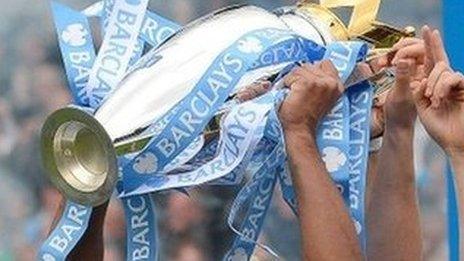
- Published16 December 2014
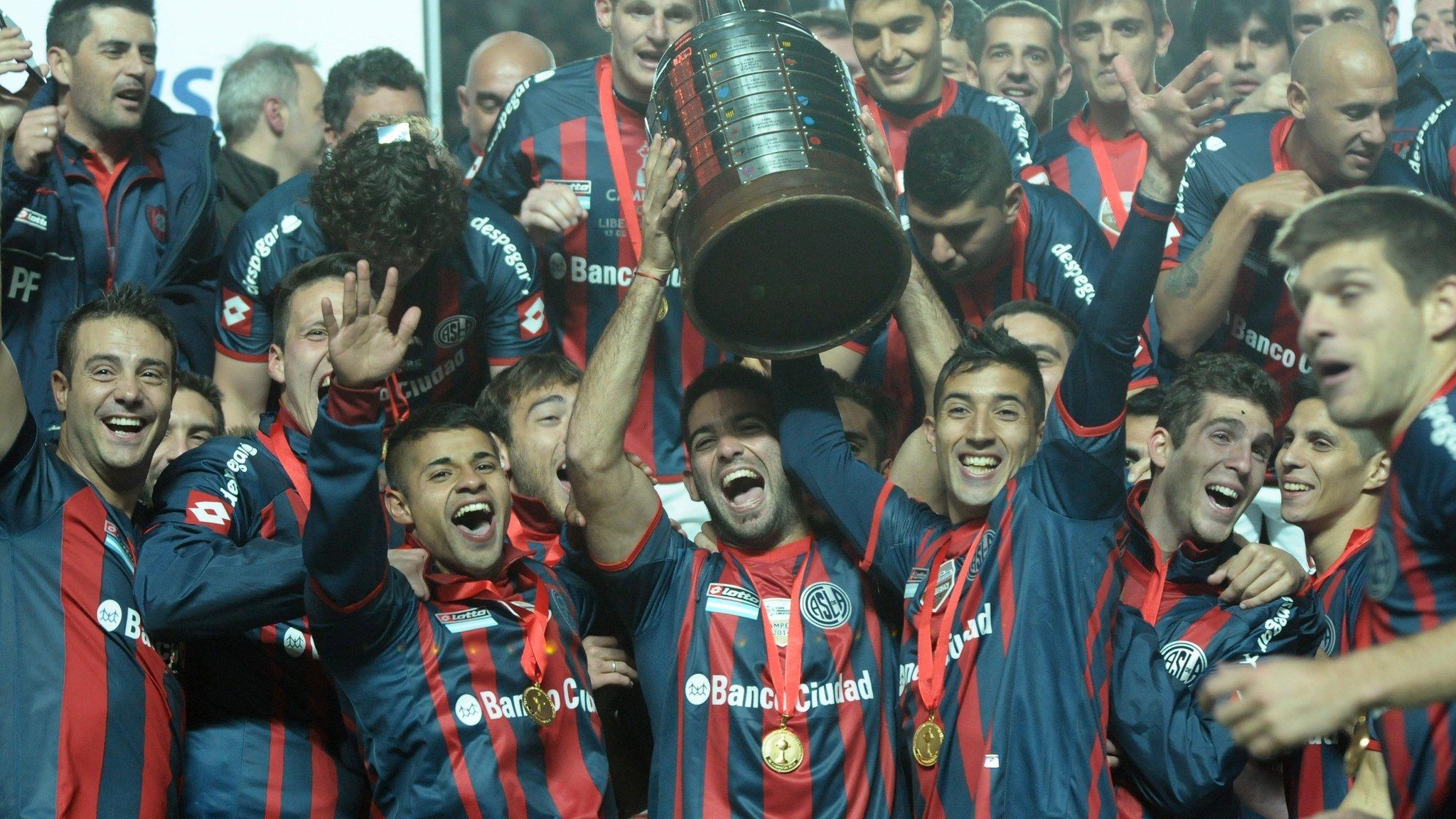
- Published20 June 2016

- Published7 June 2019

- Published2 November 2018
